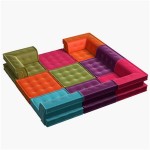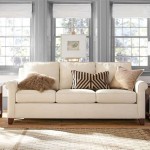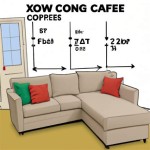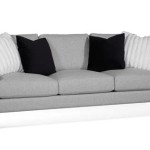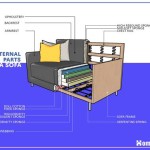Plastic Legs for Sofas: A Comprehensive Overview
Sofa legs play a more crucial role than simply lifting the furniture off the floor. They contribute significantly to the overall aesthetic appeal, structural integrity, and functionality of a sofa. While options like wood and metal are prevalent, plastic sofa legs offer a compelling alternative, boasting a unique combination of affordability, durability, and versatility. This article will delve into the various aspects of plastic sofa legs, exploring their types, advantages, disadvantages, applications, and considerations for selection.
The use of plastic in furniture manufacturing is widespread, encompassing a diverse range of components. Plastic sofa legs, in particular, are gaining traction due to advancements in polymer technology that have significantly improved their strength and appearance. This article aims to provide an objective assessment of plastic sofa legs, enabling informed decision-making for furniture manufacturers, designers, and consumers.
Types of Plastic Sofa Legs
The term "plastic" encompasses a broad spectrum of polymer materials, each possessing distinct properties that influence their suitability for different applications. Understanding the specific types of plastic used in sofa leg manufacturing is essential for evaluating their performance characteristics.
Polypropylene (PP): This is one of the most commonly used plastics globally, and finds frequent application in sofa legs. Polypropylene is a thermoplastic polymer known for its excellent chemical resistance, fatigue resistance, and ability to be molded into complex shapes. Its relatively low cost makes it an attractive option for mass production. However, polypropylene can be susceptible to UV degradation over prolonged exposure to sunlight, and its impact resistance is not as high as some other plastics.
Polyethylene (PE): Similar to polypropylene, polyethylene is another widely used thermoplastic. It comes in various densities, each offering different properties. High-density polyethylene (HDPE) is often preferred for sofa legs due to its superior strength and rigidity compared to low-density polyethylene (LDPE). Polyethylene is also highly resistant to chemicals and moisture, making it suitable for environments where these factors are a concern. Its recyclability is another significant advantage.
Acrylonitrile Butadiene Styrene (ABS): ABS is a thermoplastic polymer known for its high impact resistance, rigidity, and good aesthetic qualities. It is frequently used in applications requiring durability and a smooth, glossy finish. ABS is also relatively easy to paint and decorate, allowing for a wider range of design options. However, ABS is typically more expensive than polypropylene or polyethylene, making it a less cost-effective choice for some applications. Its resistance to solvents is also not as high as some other plastics.
Polycarbonate (PC): Polycarbonate is an exceptionally strong and impact-resistant thermoplastic. It is virtually unbreakable, making it an excellent choice for applications where high loads or extreme conditions are anticipated. Polycarbonate is also transparent, allowing for interesting design possibilities, such as incorporating LED lighting. However, polycarbonate is significantly more expensive than other plastics, limiting its use to high-end or specialized furniture.
Reinforced Plastics: To enhance the strength and stiffness of plastic sofa legs, manufacturers often incorporate reinforcing materials, such as fiberglass or carbon fiber. These reinforced plastics offer significantly improved mechanical properties compared to unreinforced plastics, making them suitable for supporting heavier sofas or withstanding greater stresses. The addition of reinforcement increases the cost of the material but can justify the investment in applications where performance is paramount.
Advantages of Using Plastic Sofa Legs
Plastic sofa legs offer several advantages that contribute to their increasing popularity in furniture manufacturing. These advantages span cost-effectiveness, design flexibility, and practical performance benefits.
Cost-Effectiveness: Compared to traditional materials like wood and metal, plastic is generally more economical. The lower material cost, coupled with the efficiency of plastic molding processes, translates to significant cost savings for manufacturers. This cost advantage is particularly relevant for mass-produced furniture where even small savings per unit can accumulate into substantial sums.
Design Flexibility: Plastics can be molded into virtually any shape or size, offering designers unparalleled freedom in creating unique and aesthetically pleasing sofa legs. This flexibility extends to incorporating intricate details, curves, and textures that would be difficult or expensive to achieve with other materials. Furthermore, plastics can be easily colored and finished to match a wide range of furniture styles and color palettes.
Durability and Resistance: Modern plastics are engineered to withstand a wide range of environmental conditions. They are resistant to moisture, chemicals, and insects, making them suitable for use in various climates and environments. Unlike wood, plastic does not rot or warp, and unlike metal, it does not rust. This durability ensures that plastic sofa legs maintain their structural integrity and appearance over time, reducing the need for frequent replacements.
Lightweight: Plastics are generally lighter than wood or metal, making them easier to handle during manufacturing, transportation, and assembly. This reduced weight can also contribute to lower shipping costs and easier maneuverability of the finished sofa. The lightweight nature of plastic, however, does not necessarily equate to weakness; engineering plastics offer excellent strength-to-weight ratios.
Ease of Manufacturing: Plastic molding processes, such as injection molding and extrusion, are highly efficient and capable of producing large quantities of parts in a short period. This efficiency translates to faster production times and lower labor costs. The ease of integrating features such as mounting hardware directly into the plastic leg during the molding process further streamlines the manufacturing process.
Recyclability: Many types of plastics are recyclable, contributing to a more sustainable and environmentally friendly approach to furniture manufacturing. The use of recycled plastics in sofa leg production further reduces the environmental impact and promotes a circular economy. While not all plastics are easily recyclable, ongoing advancements in recycling technology are expanding the range of plastics that can be effectively recovered and reused.
Considerations for Choosing Plastic Sofa Legs
Selecting the appropriate plastic sofa leg requires careful consideration of several factors, including the intended application, load requirements, aesthetic preferences, and budget constraints. A thorough evaluation of these factors will ensure that the chosen legs meet the specific needs of the furniture and provide satisfactory performance over its lifespan.
Load Capacity: The primary function of sofa legs is to support the weight of the sofa and its occupants. It is crucial to select legs with a sufficient load capacity to prevent failure or deformation under typical usage conditions. The manufacturer's specifications should be carefully reviewed to ensure that the legs are rated for the intended load. Consider the potential for overloading the sofa, such as during parties or when moving heavy objects.
Material Selection: As discussed earlier, different types of plastics offer varying properties. The choice of material should be based on the specific requirements of the application. For example, if high impact resistance is a concern, ABS or polycarbonate may be preferred. If cost is a primary factor, polypropylene or polyethylene may be more suitable. The environmental conditions in which the sofa will be used should also be considered when selecting the material.
Design and Aesthetics: Sofa legs play a significant role in the overall aesthetic appearance of the furniture. The design of the legs should complement the style of the sofa and the surrounding decor. Plastic legs can be molded into a wide range of shapes and sizes, allowing for considerable design flexibility. The color and finish of the legs should also be carefully considered to ensure that they match the desired look and feel.
Attachment Method: The method of attaching the sofa legs to the frame is crucial for ensuring a secure and stable connection. Common attachment methods include screws, bolts, and adhesive. The chosen method should be appropriate for the type of plastic and the design of the leg. It is important to ensure that the attachment points are strong and durable to prevent the legs from breaking or detaching under load.
Environmental Factors: The environment in which the sofa will be used can influence the choice of plastic leg. Exposure to sunlight, moisture, and extreme temperatures can degrade certain plastics over time. If the sofa will be used outdoors or in a humid environment, it is important to select a plastic that is resistant to these factors. UV stabilizers can be added to plastics to improve their resistance to sunlight degradation.
Cost: The cost of plastic sofa legs can vary significantly depending on the type of plastic, the design complexity, and the quantity ordered. It is important to establish a budget and select legs that meet the required performance and aesthetic criteria within that budget. Consider the long-term cost of ownership, including the potential for replacement due to damage or wear and tear.
Sustainability: Consider the environmental impact of the plastic used in the sofa legs. Opting for recycled plastics or plastics that are easily recyclable can contribute to a more sustainable approach to furniture manufacturing. Inquire about the manufacturer's environmental policies and practices to ensure that they are aligned with your values.
Manufacturer Reputation: Choose a reputable manufacturer with a proven track record of producing high-quality plastic sofa legs. A reputable manufacturer will be able to provide detailed specifications and performance data for their products, as well as offer technical support and warranty coverage. Reading customer reviews and seeking recommendations from other furniture manufacturers can help identify reliable suppliers.
By carefully considering these factors, furniture manufacturers and designers can select plastic sofa legs that provide a cost-effective, durable, and aesthetically pleasing solution for their furniture designs.

2 Inch Black Plastic Sofa Leg At Rs 60 Piece New Delhi Id 22374809162

Uniquella Non Breakable 2 L Shape Plastic Sofa Legs 4 Pcs Floor Friendly Include In Buy

Sofa Legs 4 Inch Plastic Couch Replacement Furniture Pack Of For Chair Love Seats Ottoman Square With M8 Hanger Bolt

Plastic Furniture Leg Sofa In Round Shape China Made Com

Modern L Shape Plastic Sofa Leg At Rs 7 00 Piece In Ulhasnagar Id 21747641733

4 Pcs Rubber Plastic Sofa Legs Replacement For Furniture Home Appliances Desk Chair Square Table Com

Profurnitureparts 2 5 Brown Round Hdpe Plastic Sofa Leg W Bolt Set Of Www Com

Black Plastic Sofa Leg At Rs 8 Piece In New Delhi Id 21552258355

Plastic Sofa Leg At Rs 4 Piece In New Delhi Id 26088291773

Velvet Couch With 2 Pillow 78 Inch Width Living Room Furniture 3 Seater Sofa Plastic Legs Black Com

